The Majestic Salkantay Mountain
What is Salkantay Mountain?
Salkantay Mountain, also known as Salcantay, is a majestic peak located in the Cusco region of Peru. This imposing snow-capped mountain was revered by the Incas and still holds great significance for Andean communities, who keep the beliefs and traditions of their ancestors alive. Salkantay Mountain is part of the renowned “Vilcabamba Mountain Range,” a mountainous chain of great beauty and historical significance. Its proximity to iconic places like Choquequirao and Machu Picchu makes it a highly attractive destination for travelers.
Where is Salkantay Mountain Located?
Salkantay Mountain is situated in the Vilcabamba mountain range, in the Cusco department, southern Peru. It is specifically located in the Convención province, in the district of Santa Teresa. This privileged location offers breathtaking landscapes and the opportunity to explore one of the most beautiful and diverse regions in the country.
At What Altitudes is it Found?
The summit of Salkantay Mountain rises majestically to an elevation of 6,264 meters above sea level (20,551 feet). It is one of the highest mountains in the region, providing a stunning spectacle for those who venture to admire it. Additionally, on the famous trek known as the “Salkantay Trek,” hikers traverse the pass of this mountain, located at 4,600 meters above sea level (15,091 feet). This experience allows them to enjoy unparalleled panoramic views and a unique connection with nature.
With its rich history, natural beauty, and role in the famous Salkantay Trek, Salkantay Mountain is undoubtedly one of the highlights in the Cusco region. Exploring this imposing mountain offers an unforgettable experience, full of adventure and connection with Andean culture.

History of Salkantay Mountain
In ancient times, long before the Inca era, Salkantay Mountain was an object of worship for the peoples and ethnicities living in its vicinity. According to historical chronicles, the territories near the mountain were inhabited by the so-called “Rimactampus,” who were conquered by the first Inca, Manco Cápac, in the 13th century. The Incas continued to venerate this imposing mountain, which they called “Apu,” meaning “great lord” in Quechua. Common rituals included “earth payments,” consisting of offerings of corn, coca leaves, and the blood of camelids.
Despite attempts to prohibit mountain worship during the colonial era, considered by the Spanish as “idolatry,” the reverence for mountains remained ingrained in Quechua culture. Even today, Andean communities continue to worship Salkantay Mountain, considering it one of the most powerful deities. From the highest points of Machu Picchu, Choquequirao, and other Inca citadels, one can appreciate the majesty of Salkantay and its vast snow-capped layers.

The Hike to Salkantay Mountain
Currently, Salkantay Mountain is part of a 5-day, 4-night hiking route that culminates in Machu Picchu. This route traverses the impressive “Abra Salcantay,” allowing visitors and Andean locals the opportunity to leave “apachetas,” stone offerings, at the mountain’s summit. This route is considered one of the most challenging within the tourist circuits leading to Machu Picchu. Nights near the mountain are extremely cold, but this doesn’t deter the numerous visitors who embark on this hike.
Capacocha: Sacrifices on the Highest Mountains
Capacocha was an Inca religious ceremony that involved the sacrifice of children on the empire’s highest mountains. This ritual took place in times of drought, famine, or natural disasters. The most beautiful children were chosen for this ritual, and today, mummies can be found in museums in Peru, Chile, and Argentina as evidence of this ancient practice.
Challenge and Beauty on the Salkantay Hike
The route known as the “Salkantay Trek” covers approximately 70 kilometers in 5 days and 4 nights. It traverses high landscapes surrounded by majestic snow-capped mountains, including the pass of Nevado Salkantay, located at 4,600 meters in altitude. It also passes through landscapes typical of the high jungle of Cusco, such as the town of Santa Teresa, located at 1,550 meters in altitude. On the final day of the hike, you reach the Inca city of Machu Picchu through the town of Aguas Calientes. The hike presents a medium to challenging level of difficulty, being a bit more demanding than the famous “Inca Trail.”
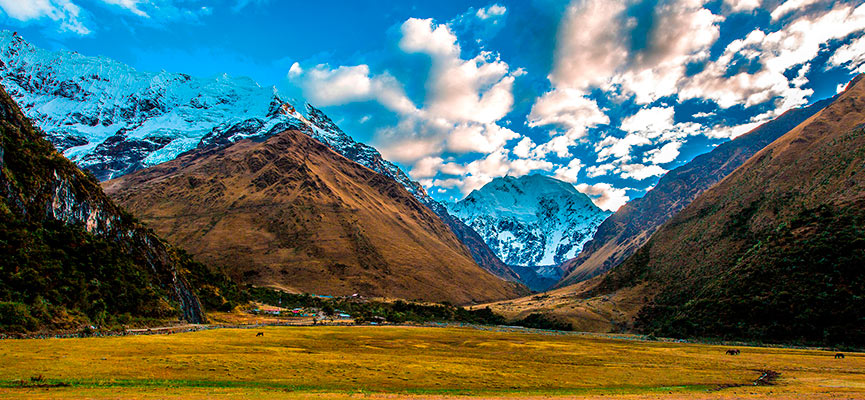
Exploring the history of Salkantay Mountain and undertaking the hike to its imposing heights is a challenge that combines the natural beauty of the Andean landscapes with a deep connection to Inca culture and history.
Map of the Salkantay Mountain Route
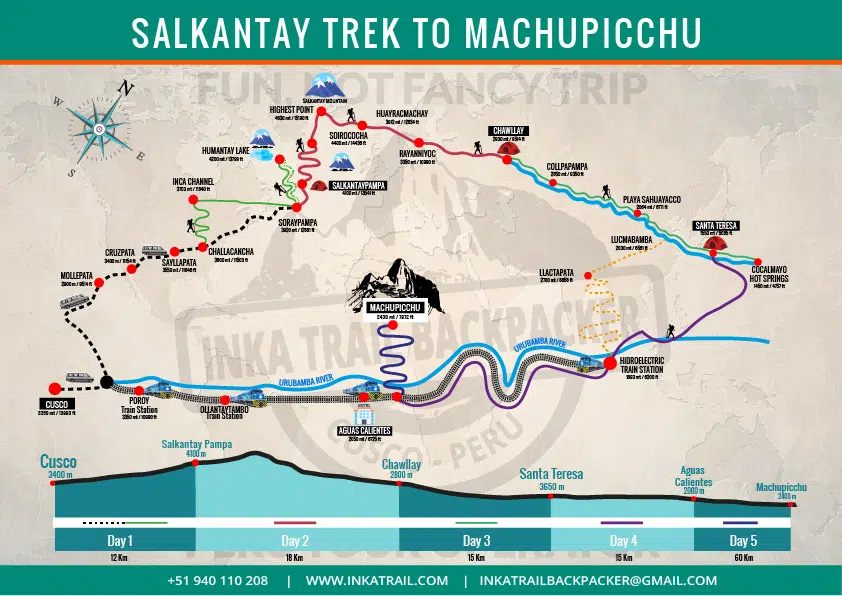
Exploring the Natural Diversity of Salkantay Mountain
In the mountains near Salkantay, one can appreciate abundant flora and fauna. Among the animal species inhabiting this area are the vizcacha, alpaca, llama, and condor, offering visitors the opportunity to observe wildlife in its natural habitat. Regarding flora, the presence of ichu, a type of Andean grass, stands out. Additionally, during the hiking route, one can encounter species typical of the high jungle of Cusco, such as the torrent duck, spectacled bear, cock-of-the-rock, and many others. Orchids are the most common flowers found during this trek, adding a touch of color and beauty to the landscape.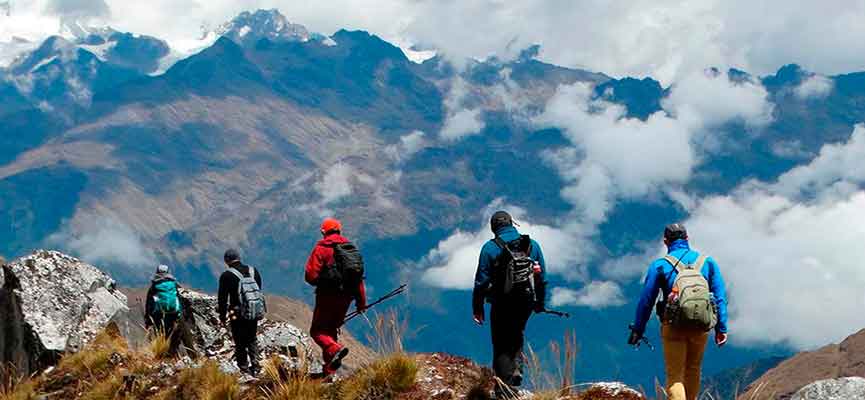
The Challenge of Abra Salkantay
Abra Salkantay, located at 4,600 meters in altitude, is the highest point that tourists cross during the famous “Salkantay Trek.” From this elevated position, one can contemplate the imposing snow mass of the second-highest snow-capped mountain in the Cusco region and one of the largest in Peru. This place is very popular for taking photographs, and reaching it represents a significant challenge. Abra Salkantay is reached on the second day of the route, providing hikers with a spectacular panoramic view.
The Beauty of Humantay Lagoon
Humantay Lagoon, located near Salkantay Mountain, is one of the most beautiful landscapes in the Cusco region. Its turquoise waters provide an ideal setting for capturing stunning photographs. Reaching this lagoon requires additional effort during the hike, making it optional for tourists. However, for those who decide to explore it, the challenge will be worthwhile. Humantay Lagoon can be accessed through a tour from Cusco or as part of the famous “Salkantay Trek.” This landscape has become one of the most photographed destinations in Cusco, captivating visitors with its natural charm.

The Majesty of Machu Picchu
The Inca city of Machu Picchu is the final destination of the “Salkantay Trek,” covering approximately 70 kilometers on foot. Access to this ancient wonder is through the route passing through the town of Aguas Calientes. From the top of the archaeological site, in the Intipunku sector, you can enjoy a breathtaking view of the imposing Salkantay Mountain. This scene is considered one of the most beautiful landscapes in the Cusco region, providing visitors with an unforgettable experience.
Discovering the natural diversity, the majesty of the mountains, and the captivating landscapes surrounding Salkantay Mountain is a fascinating adventure that combines the exploration of flora and fauna, challenging hiking routes, and the astonishing encounter with the ancient city of Machu Picchu.
What is the Route to Salkantay Mountain Like?
- Day 1: Departure from Cusco to Mollepata and Soraypampa. Visit to Humantay Mountain and arrival at the Soraypampa camp.
- Day 2: Ascent to the highest point of the trek, Abra Salkantay. Descent to Challway and camping.
- Day 3: Hike through the Totora Valley to the town of Wiñaypoco. Descent to the “Beach” and transfer by bus to Santa Teresa.
- Day 4: Hike along the Urubamba River to the Hidroeléctrica train station. Continue on foot or by train to Aguas Calientes.
- Day 5: Guided tour of Machu Picchu. Free time to explore. Return by train to Ollantaytambo and transfer to Cusco.
During the trek, meals, campsites, and a tour guide are included. More detailed information about the tour can be found HERE.
The Climate at Salkantay Mountain: A Challenge of Extreme Temperatures
Salkantay Mountain is characterized by extremely cold weather. During the day, temperatures can reach 8ºC (46.4ºF), while at night, they drop to -10ºC (14ºF). The rainiest months are from November to April, while from May to October, there are fewer rainy days but colder temperatures.
The Salkantay Trek: A Route with Diverse Climates
The “Salkantay Trek” route offers varied weather throughout the days of the hike. The first two days are the coldest, especially during the nights, as you traverse higher-altitude landscapes near the mountain. In contrast, the last three days are warmer as you descend towards the high jungle areas of Cusco. During this stage, temperatures can range from 8ºC (46.4ºF) to 24ºC (75.2ºF), providing a diverse and enriching climatic experience.
Options for Taking the Route
There are two ways to do the Salkantay Trek: through an all-inclusive tour or independently. It is recommended to choose the first option for greater safety and comfort. To do this, simply hire a tour with a tourism agency, either online or directly in the city of Cusco. Unlike the Inca Trail, this route does not have limited availability, so it is possible to book with a few weeks or even days in advance.
Other Alternatives to the Salkantay Trek:
- Hikes to Machu Picchu
- Salkantay Trek to Machu Picchu 5 days / 4 nights
- Salkantay Trek to Machu Picchu 4 days / 3 nights
- Inca Jungle Trail to Machu Picchu 4 days / 3 nights
- Inca Jungle Trail to Machu Picchu 3 days / 2 nights
- Huchuy Qosqo Hike to Machu Picchu 2 days / 1 night
- Lares Trek to Machu Picchu 4 days / 3 nights
- Hike to Choquequirao 4 Days / 3 Nights
Estimated Cost Salkantay Trek
The Salkantay Trek tour has an approximate cost of between 300 and 400 US dollars per person, which may vary depending on the tourism agency and the quality of the service offered. The most economical option to do this 5-day Salkantay Trek at a reduced cost is with InkaTrailBackpacker.
Services Included in a Salkantay Trek Tour
A Comprehensive Tour: Services Beyond Your Expectations
When you opt for a Salkantay Trek tour, you will enjoy an unforgettable experience that includes a series of services designed for your comfort and enjoyment. Here are the services typically included in these tours:
- Entrance to Machu Picchu: The tour provides guaranteed access to the magical Inca city of Machu Picchu, where you can explore its fascinating ruins and connect with its millennia-old history.
- Transportation to Mollepata: The tour facilitates your arrival at the starting point of the hike, providing transportation from Cusco to Mollepata, where your adventure will begin.
- Expert Tour Guide: Throughout the journey, you will have the company of a professional tour guide who will accompany you and provide detailed information about the places you will visit, the local culture, and the history of the area.
- Porters and Horse Loaders: To lighten the weight of your luggage during the hike, the tour provides the services of porters and loaders who will transport your belongings, allowing you to enjoy the trail with greater comfort.
- Chefs’ Service: Salkantay Trek tours typically include the service of chefs who will prepare delicious breakfasts, lunches, and dinners throughout the trek. You can enjoy nutritious and tasty dishes to recharge your energy amidst nature.
- Camping Equipment: You won’t have to worry about the necessary camping equipment, as the tour will provide everything you need, including tents, poles, first aid equipment, and other essentials for a safe and comfortable experience.
- Return from Machu Picchu to Cusco: Once your visit to Machu Picchu is complete, the tour will arrange your return to Cusco, providing you with transportation by train and bus for a safe and comfortable journey.
These services included in the Salkantay Trek tour will allow you to enjoy an unparalleled experience with all the comforts and necessary services for your adventure to be memorable.
Salkantay in Photos
-

- Salkantay
-

- Salkantay
-
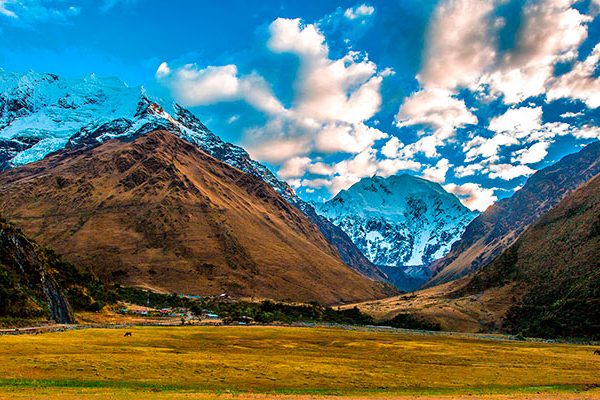
- Salkantay trek
-

- Cima de Machu Picchu
Essential Information about the Salkantay Trek to Machu Picchu
The Salkantay Trek is considered one of the most impressive treks to Machu Picchu, following the Inca Trail. Unlike the Inca Trail, the Salkantay Trek reaches Machu Picchu through the town of Aguas Calientes instead of the ancient Inca gate of Intipunku.
Unlike the Inca Trail, the Salkantay Trek can be done independently, although it is recommended to hire a tour for greater safety and comfort.
The classic duration of the Salkantay Trek is 5 days and 4 nights, but there are also shorter versions of 4 days and 3 nights that use transportation to shorten the hike.
It is recommended to do the Salkantay Trek during the dry season months (April to October), as January, February, and March are rainier and more challenging to walk.
Experiencing symptoms of altitude sickness, such as nausea and headache, is normal during the hike at high altitudes. Drinking enough water and allowing the body to acclimate gradually will help alleviate these symptoms.
It is important to carry a backpack with essentials such as a sleeping bag, waterproof jackets, sunscreen, rehydrating water, a rain poncho, snacks, and personal hygiene items. Hiking shoes with sturdy soles are recommended. The rest of the necessary equipment will be included in the tour.
The Salkantay Trek can be done throughout the year, but it is essential to consider weather conditions and altitude sickness symptoms for a safe and enjoyable experience.
Si te gustó este artículo y la información que encontraste, ¡regálanoss 5 estrellas!




 (Ninguna valoración todavía)
(Ninguna valoración todavía)


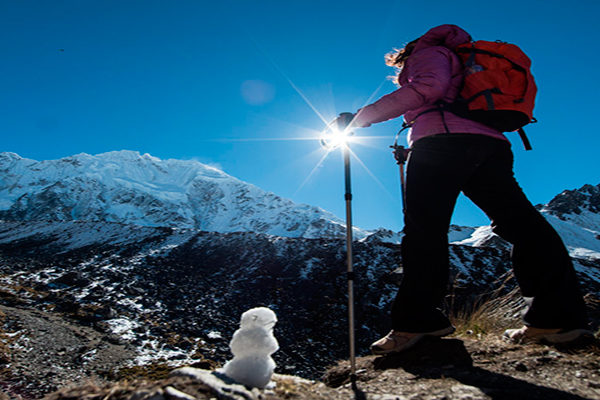


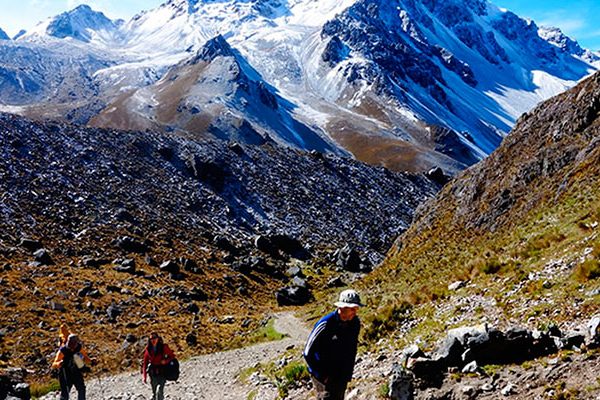




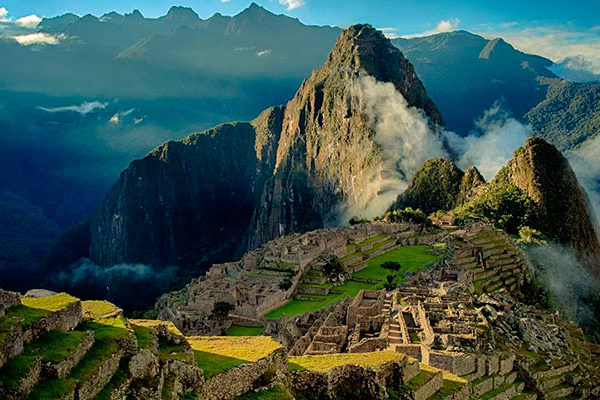


Share on FacebookShare
Share on Twitter Share